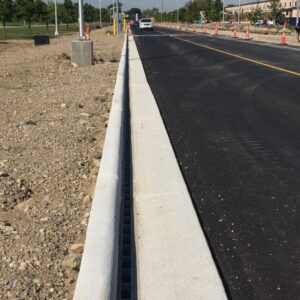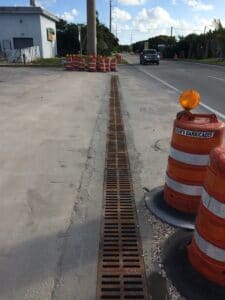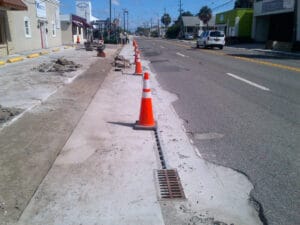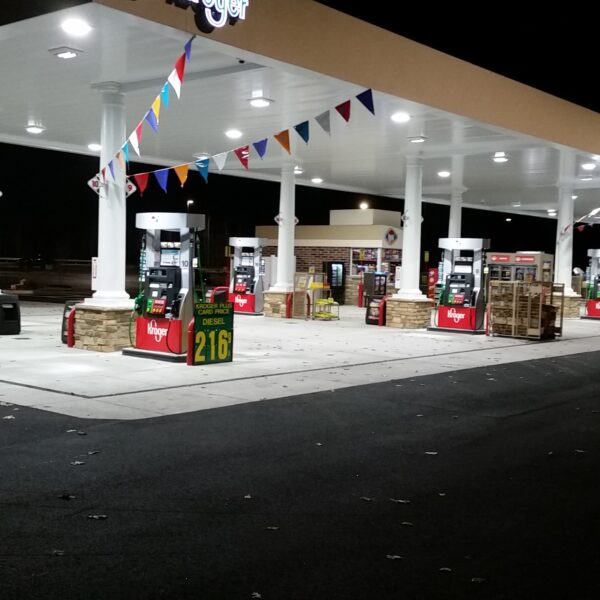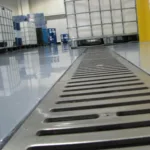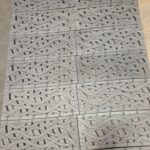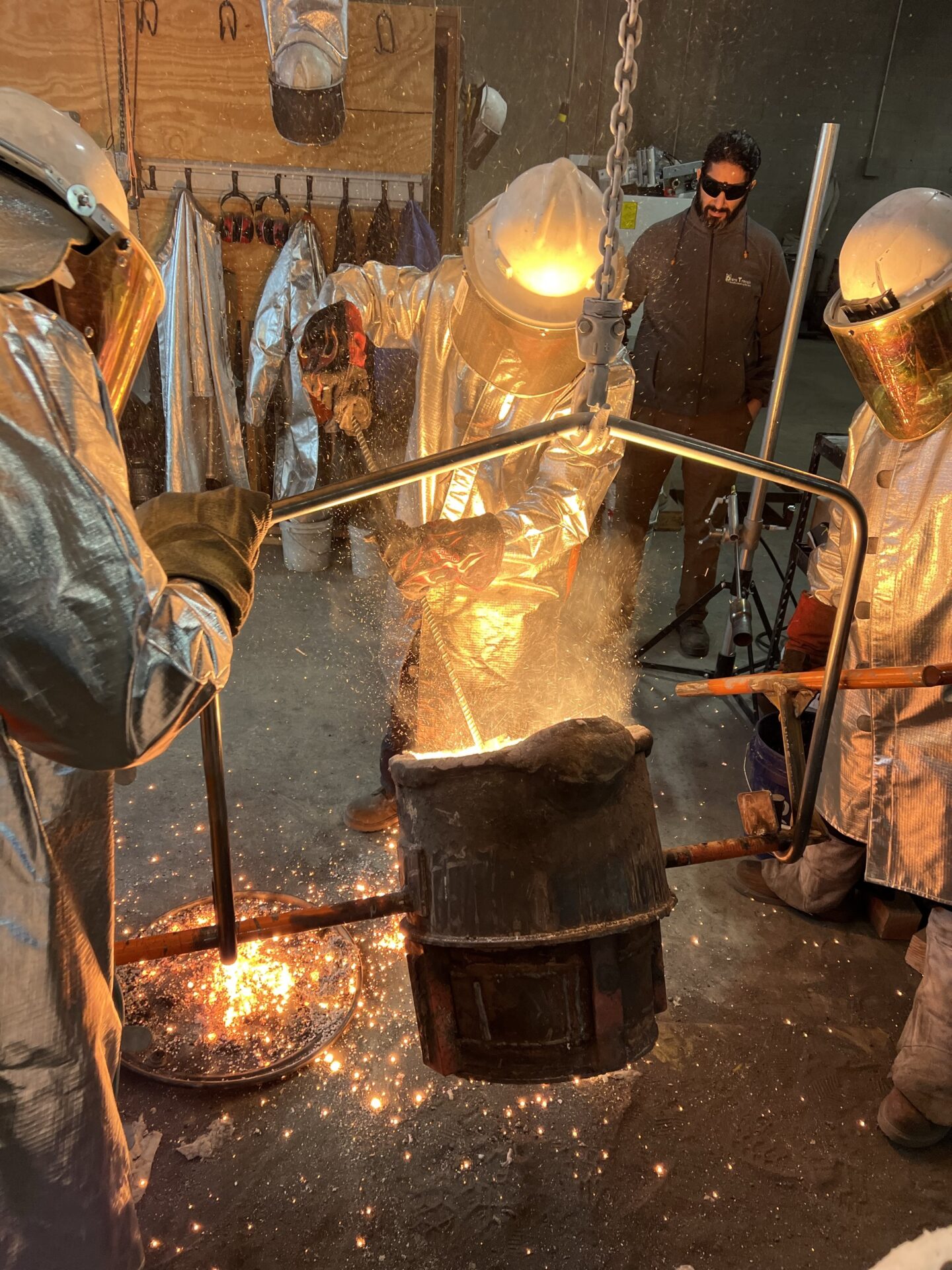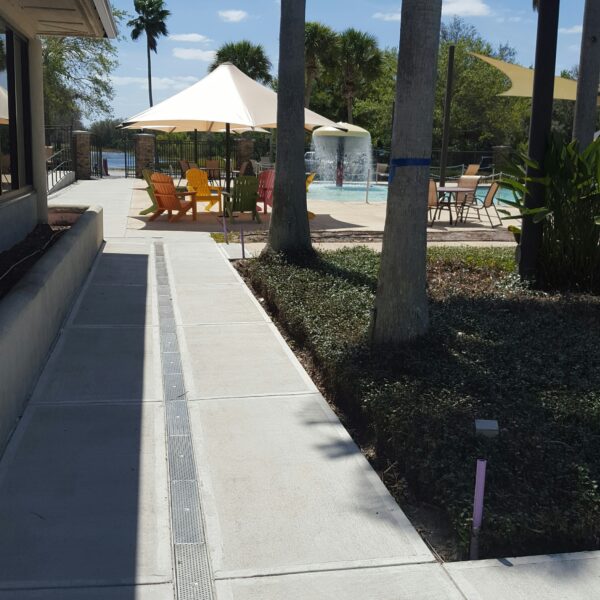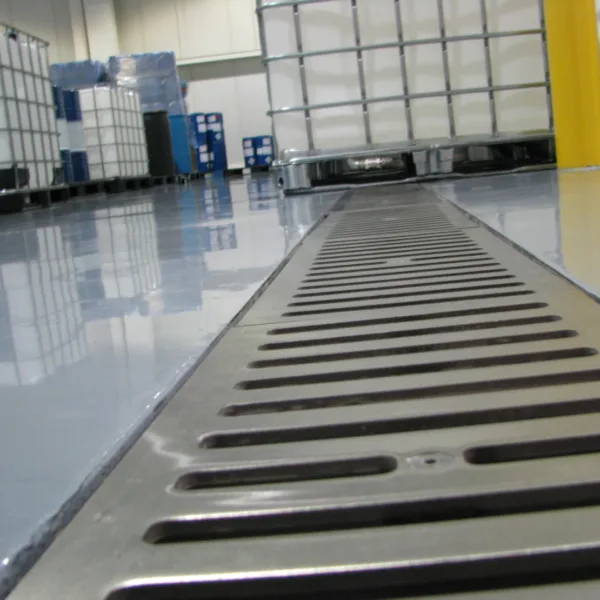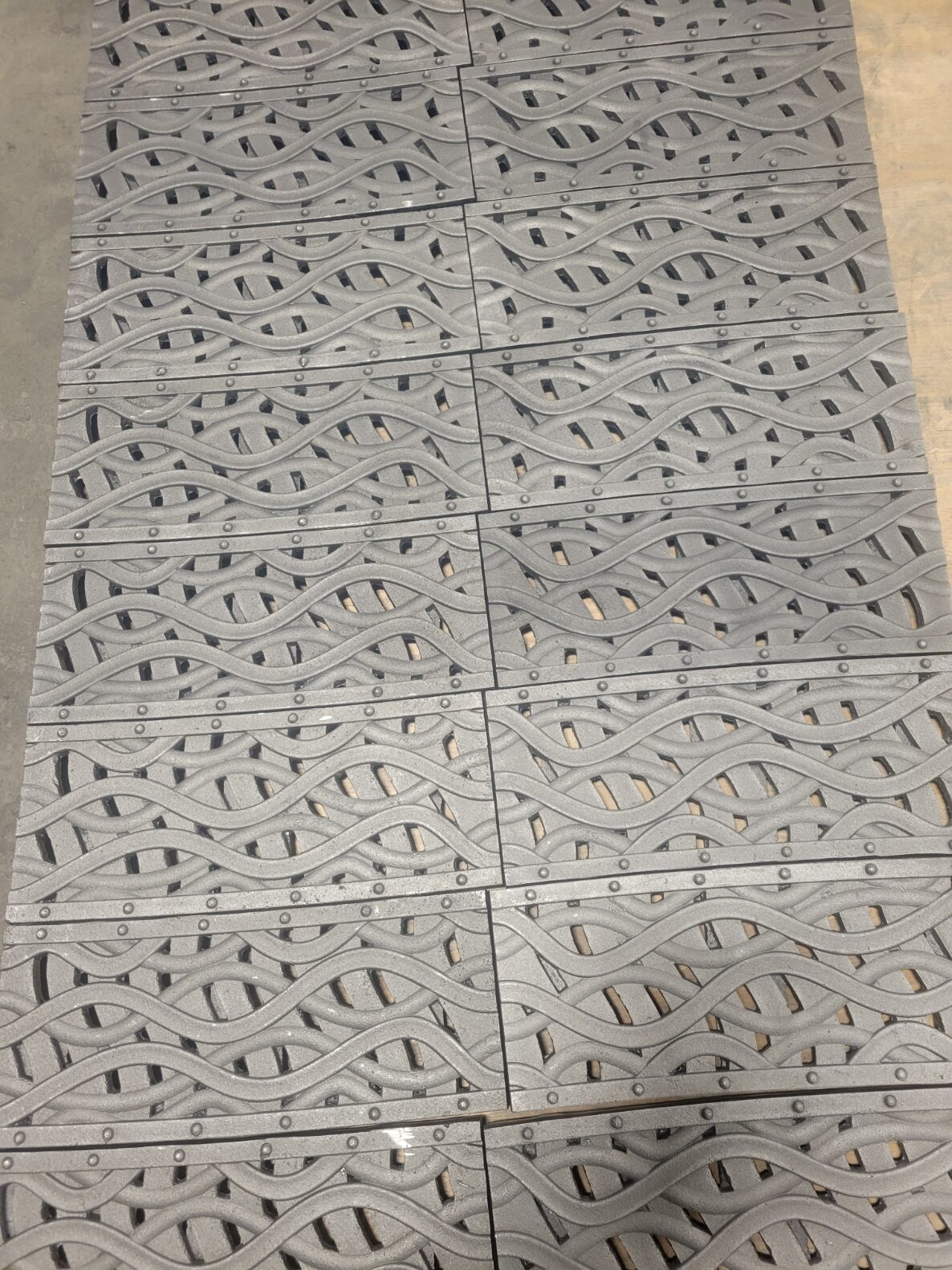Roads and highways need to be carefully designed to make sure that standing water doesn’t impact driver safety or the use of roadways. In some instances, changes to the road surface or the weather patterns can change over time, but in most cases, these factors help determine how to design proper road drainage for any given location. There are various factors that need to be considered when it comes to improving drainage for roads and highways.
Increasing drainage along roadways often comes down to making improvements or changes to the existing roadway to ensure that water management is improved.
What Factors Impact Roadway Drainage?
There are various common factors that impact how well a roadway surface drains. Being familiar with the variables that lead to drainage issues for most roadways can help you to create solutions to your drainage issue that really work. The more informed you are about your options, the more likely it will be that you will be able to come up with a quality solution to the issue.
1. Hydrology
Peak flow rates are important to decisions about how to manage drainage for roadways. There are various methods that can be used to calculate this factor related to roadway usage and safety, and the historical weather data for the region is often central to these considerations. Different roadway materials and designs exist for roadways that are exposed to a significant amount of precipitation each year. Different kinds of precipitation also require different drainage in some cases. Winter precipitation is different from simple rain, and you need to be aware of the hydrology of the road surface in question under both of these conditions if they apply in your region of the world.
2. Slope
The slope of a roadway will, of course, have a lot to do with how well it drains. Roads are not built to be entirely flat as this would lead to standing water lingering after rainstorms or winter weather. The degree to which the roadway has to be sloped has to do with the overall location of the road and the expected peak volume of water that might have to be drained off the road surface at any given time. As an example, a road that is placed at the base of a hill will require a different drainage slope than one that is located farther up the elevation of the hill.
Slopes of roadways can sometimes be incorrect in the original design of the road itself. This is part of why there are often issues with drainage at the base of hills or in the depression between two different roadways. The solutions discussed here will help you to resolve these issues if you cannot tear up the road and start fresh.
3. Inlet Spacing and Gutter Flow
Stormwater has to be allowed to exit the roadway via gutters and inlets. The size of the gutter, as well as the design of inlets and their spacing, can greatly impact how much standing water has to be removed from the roadway during peak volume periods. These factors cannot always be controlled, and often, roadways are built to connect with existing infrastructure that was not designed specifically for the roadway in question.
Being able to offer solutions that prevent standing water and other problems with roadway drainage is often essential when it comes to looking at factors that impact road drainage and ways to improve it.
Possible Solutions to Roadway Drainage Issues
The material of the roadway in question has a lot to do with choosing the solution or solutions that will work best for your standing water problem. Roads that are not paved will need very different drainage solutions than roads that are paved. You will want to be sure that you are aware of the potential uses of all of these different solutions before you start to make a plan to improve your roadway drainage.
Unpaved Roads
In the case of unpaved roads, the most common solution is to use water bars. These are narrow structures that are a lot like speed bumps or speed breaks in other roadways. The water bar will need to be angled to the road direction at about 45-60 degrees (out-slope to daylight). Water bars are prone to clogging if they are not placed at the right angle. These bars will need to have a height of 75-150 mm and a width of 0.3-1m.
Water bars can be made of soil, but reinforced rock material works as well. In cases where there are prefabricated structures involved in the installation, 2/3 of the structure will have to be embedded in the road body.
The ideal number of water bars varies depending on the slope and road grade. The greater the slope, the less space there will need to be between water bars. In the instance that the roadway is highly erodible, the distance might need to be even further reduced.
Standard Roads
One of the most commonly used solutions to increase road drainage in standard roads is the rolling dip. This is a related solution that offers a small depression and a raised bump, which encourages water drainage. This is essentially a dip and ramp solution that will help to manage water flow off the roadway and into associated drainage collection points.
Rolling dips are often used for lower-volume roads that have grades from about 3-15%. The minimum slope of these roads has to be 3% to ensure that the velocity of the flow of water is sustained through the dip. This will prevent the puddling that is likely already damaging the road surface. Drainage will need to be encouraged to flow into storm drains and other outlets by a 30 cm area of slope, which encourages runoff.
If the road grade is too steep, the rollout will be too steep to ensure even flow toward collection points. The drainage dips have to be placed at an angle to the road, much like water bars. They will need a cross slope of 4-8%. This is steep enough that sediment and other detritus should also be swept away from the road surface with drainage water. The size and spacing of the drainage dips are determined in the same way as the water bars which were discussed above.
Trench Drains and Slot Drains
No matter what kind of solution is used to make water run away from the center of the road’s surface, you will need quality drains along the sides of the road to capture the water and remove it. Slot drains and trench drains can be ideal for these purposes and can readily be connected to existing storm drains and catch basins. Most roadways will need some form of trench drains to collect runoff and keep it from puddling alongside the roadway.
Slot drains are ideal for roadways where there is concern about wheeled traffic pulling gratings off the drains and where consistent, steady traffic is experienced. These are a very low-profile solution that can be counted on to tackle just as much run-off as a regular trench drain without the larger opening that is protected by a grate.
A traditional trench drain will require a grate that is specifically designed for the amount of water flow that is expected during peak times. These drains have a different design than slot drains but can handle large volumes of water with ease. Grates can be made from many different kinds of materials and can even be designed to screw into the drain itself to prevent covers being lost or lifted off the trench below.
No matter which of these drainage solutions you decide to access for your roadway drainage improvement process, you will need to know how much water volume the drains need to handle. The peak flow portion of your discovery and planning process is essential to all of these different drainage solutions. Without knowing how much water has to be handled at peak times, you cannot accurately select the right size trench or slot drain for your needs.
Working with a skilled installation expert can make a big difference when it comes to selecting the right trench or slot drains for your location. There are so many different sizes and styles of roadway drainage that it can be overwhelming if you are not familiar with the best solutions for your specific situation.
Dura Trench Can Help You Improve Roadway Drainage
If you are struggling with a roadway location that is not draining reliably and is experiencing issues with standing water or flooding, the team at Dura Trench can help! We can offer you access to quality drainage components and systems that will be perfect for your roadway water management needs. Our skilled team of experts will be happy to answer your questions about improving roadway drainage and will help you get paired up with the right drainage solutions for your needs.

